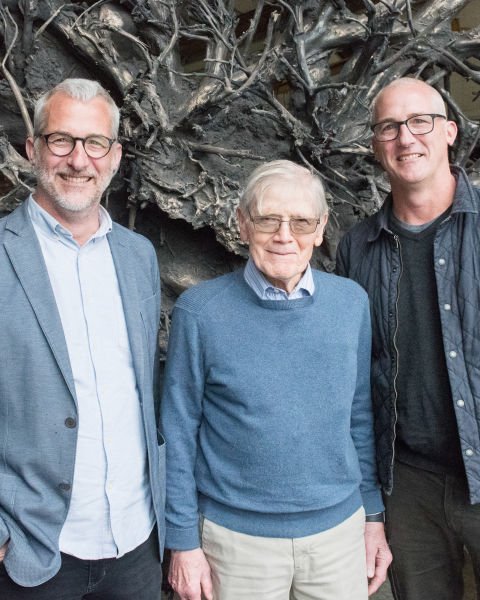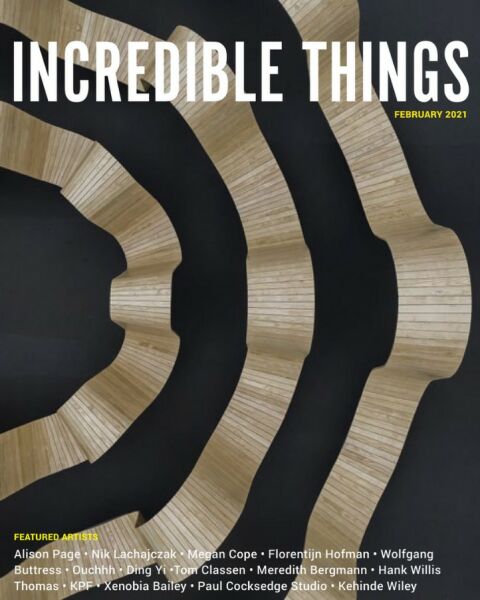Public Art Fund Presents Four Monumental Bronze Sculptures by Huma Bhabha at Brooklyn Bridge Park
8 May 2024

March 28, 2024, New York, NY Opening April 30, Public Art Fund will debut Huma Bhabha: Before The End, an exhibition featuring a series of four new large scale bronze sculptures set against the verdant backdrop of Brooklyn Bridge Park. Drawing inspiration from a diverse array of influences, Bhabha’s works blend aesthetic, cultural, and psychological elements, probing the intersections of art, science fiction, horror, and mythology.
Based in Poughkeepsie, New York, Bhabha creates sculptures, drawings, and installations that reimagine the figure. She made the four bronze sculptures featured in Before The End by casting carved cork and skull fragments. The mysterious figures recall ancient effigies cut into tombstones.
These expressive eight-foot-tall forms, titled Feel the Hammer, Member, Mr. Stone, and Nothing Falls, appear to be emerging from the depths of the earth, or perhaps returning to the underworld, their surfaces evoking centuries of eroded sediment and stone. The exhibition’s title, Before The End, creates a sense of momentous intensity, theatricality, and subtle humor. Like the sculptures themselves, Bhabha’s influences span across time and genre, including classic cult horror films like Destroy All Monsters, H.R. Giger’s designs for the Alien franchise, and the work of artists including Giacometti, Marisol, and Basquiat.
“Huma Bhabha’s eccentric characters captivate through contradiction, seemingly forged in geological time yet animated with a visceral sense of immediacy,” said Public Art Fund
Executive & Artistic Director Nicholas Baume. “Before The End is set amidst the expansive landscape of Brooklyn Bridge Park, a site where natural and man-made elements converge, allowing the works to take on a profound sense of connection to the earth.”


Situated in staggered positions along the Pier 3 Uplands at Brooklyn Bridge Park, Bhabha’s monumental sculptures will conjure a sense of mystery and ambiguity. Surrounded by formidable landmarks, including the Statue of Liberty, One World Trade, and the waterways and bridges between boroughs, viewers are prompted to contemplate these totemic, larger-than-life forms. The park itself also serves as a significant setting, having undergone an evolution over time that conceals the rubble of centuries of history beneath its surface.
Before The End is Bhabha’s second time presenting work with Public Art Fund, following the inclusion of her sculpture, The Orientalist, in the group exhibition Statuesque at City Hall Park in 2010. She continues to push the boundaries of contemporary sculpture with her unique visual language. Bhabha’s hybrid forms seem to exist in their own parallel universe, offering visitors an opportunity to reflect upon their own time and place. Huma Bhabha: Before The End is curated by Public Art Fund Executive & Artistic Director Nicholas Baume with support from Public Art Fund Assistant Curator Jenée-Daria Strand.


Image credit: Nicholas Knight for Public Art Fund
#相关文章

Introducing Art Makers: Bringing to Life New Works of Art
A breakthrough financing vehicle and investment framework bringing to life new works of art aimed to help artists, galleries and commissioning bodies.

UAP + Polich Tallix
UAP and Polich Tallix were both born out of similar philosophies and values: a dedication to craftsmanship, continued support of the creative vision, and a devotion to exceptional collaboration, all delivered with finesse and enthusiasm.

Incredible Things Issue One
Looking back at some the incredible things we have delivered recently in Australia, China, the United States and the Middle East.